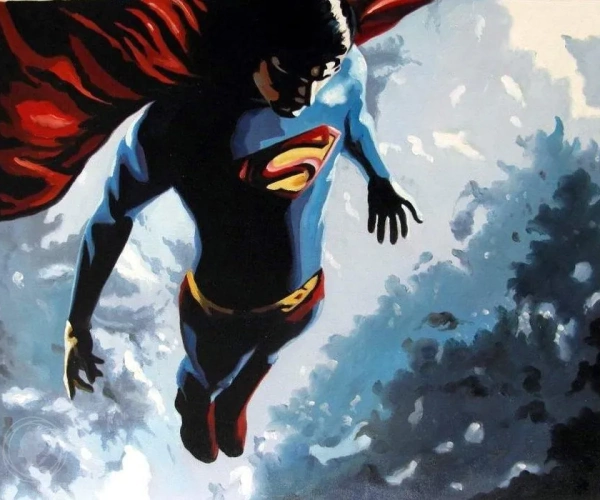Superman
The artwork "Superman," emblematic of the Pop Art movement, encapsulates the vibrant energy and cultural commentary that defined this artistic period. Pop Art, emerging in the 1950s and flourishing in the 1960s, was marked by its embrace of popular culture and its bold departure from traditional artistic canons. In "Superman," this movement's quintessence is vividly expressed through its subject matter, style, and underlying themes. The choice of Superman, a comic book character, as the subject of the artwork, signifies a radical shift in artistic focus. Traditionally, high art centered on historical, religious, or mythological themes. By contrast, Pop Art turned to contemporary, everyday sources of popular culture, such as comic books, advertising, and celebrities. Superman, a symbol of American culture and heroism, perfectly encapsulates this. The artwork’s portrayal of such an iconic figure serves not just as a celebration of popular culture but also as a subtle critique of the values and ideals perpetuated by these mass-media symbols.
Stylistically, "Superman" is characterized by bold colors, clear outlines, and a flat, almost two-dimensional appearance, drawing direct inspiration from comic books. This style is a deliberate choice, reflecting Pop Art's fascination with mass production and commercial art. By mimicking the aesthetics of print media, the artwork blurs the boundaries between 'high' and 'low' art, challenging the elitism of the art world and democratizing artistic expression.
Moreover, "Superman" can be seen as a commentary on the consumerist culture of the time. The replication and serialization of images in Pop Art echo the mass production prevalent in consumer society. In this context, Superman becomes more than just a superhero; he transforms into a product, a symbol of the commodification of culture. This aspect of the artwork invites viewers to reflect on the relationship between art, commerce, and popular culture.
In sum, "Superman" by Pop Art is not just a celebration of a cultural icon but a complex, multi-layered piece that speaks to the heart of the Pop Art movement. It encapsulates the movement's core characteristics—its focus on popular culture, its challenging of artistic norms, and its commentary on consumerism—while remaining a visually striking and accessible piece of art.







No Comments Yet...